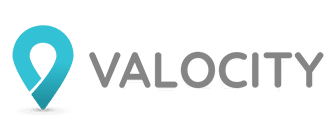The Indian real estate sector is growing by leaps and bounds. It is expected to reach US$ 1 trillion by 2030. By 2025, it will contribute 13% to country’s GDP. The growth in this sector will be spurred by emergence of nuclear families, rapid urbanisation and rising household income. In recent times, the sector has witnessed significant growth due to the Government’s ‘Housing for All’ initiative and easy access to low mortgage rates.
Currently banks and housing finance companies offering mortgages in India predominantly follow a manual valuation process. It is estimated that about 6 million valuations are done annually in residential segment in the country and total size of the market is about Rs.18 lakh crore.
However, owing to the manual and fragmented nature in which valuations are conducted, the mortgage valuation sector in India is fraught with a plethora of challenges:
- There is an eternal shortage of manpower to conduct valuations
- The market values of comparable properties are not available in public domain
- It is possible to survey the incorrect property owing to the absence of geo-coordinates in the majority cases
- Lack of consistency in approach, leading to variance in value reported
- Possibility of collusion to modify the actual value of the property
- Non-uniformity in reporting formats
- Various forms of unverified communications resulting in enhanced chances of error
A number of large banks and Housing Finance Companies (HFCs) have shifted to digitised processes and systems. On the other hand, valuation firms still operate largely through manual methods. If plugged, this disconnect will result in a more seamless and productive way of working. A shift towards a digitised process using innovative technology tools will increase the precision and efficiency of mortgage valuations. Technology will act as an enabler and usher in more objectivity, transparency and efficiency to the mortgage valuation ecosystem.
Globally, as well as in India, FinTech and PropTech firms are introducing innovative solutions that are bringing in efficiency, transparency, convenience, and accuracy in the mortgage valuation space.
A PropTech startup from Zurich, Archilyse uses available floor plans and addresses of real estate portfolios into simulations of around 300 features to generate and enrich statistical valuation models. In India, Valocity provides a robust platform which has an in-built feature of structuring addresses, gathering property data from available addresses and providing a thorough surround area analysis considering a plethora of parameters that helps lenders in making sound valuation decisions. Another technology player, Salesforce, has introduced some limited features like digital template with auto-calculation, valuation dashboards, digital data capture to aid the mortgage valuation process. The acceptance and usage of technological tools will provide an edge to valuers and assist them in generating valuations reports with higher accuracy and efficiency.
The various tools that can enable these improvements include:
- Data Analytics: Data gathered from credible sources when analysed provides rich insights which in turn enriches the quality of survey reports. Such value adds will be highly appreciated by lenders and enhance the scope of work for a valuer.
- Big data: While still at a nascent stage, big data will equip valuers to analyse large data sets accurately and create forecasting models.
- Image streaming/recording: This technology can be used by valuers to get an enhanced and objective view of the property. A visual representation of the property has the ability to improve the quality of the report.
- Virtual Reality: Heat mapping and virtual reality techniques can help in generating high quality risk profile analysis and reporting.
- Secured cloud storage: Secure cloud platforms have the ability to store large volumes of data in a safe and secure manner to minimize data security breaches. For instance, Valocity uses Microsoft Azure to provide a secure platform for seamless and secure data flow.
While the above-mentioned technologies provide significant convenience and flexibility, a comprehensive all-encompassing tech stack (like the innovative platform provided by Valocity) drives even more value for any stakeholder. Click here to discover more about the cutting-edge solutions provided by Valocity.
The future of valuations is all poised to take the next big leap with technology as the supporting framework. Firms that are agile enough to adapt themselves to this inevitable change will experience a huge growth curve and enjoy greater efficiencies in their businesses.
About Valocity:
Valocity is a FinTech company transforming and digitising the property decisioning process globally with customers across Australia, New Zealand, India, and Asia.
Valocity digitises the entire property valuation process with its unique Microsoft Azure hosted, cloud-based valuation platform, with bespoke solutions for residential, commercial, and agricultural lending.
It combines the best of nationwide property data with global technology and advanced analytics expertise to create, customised insights, and valuation solutions that enable data driven decision making and more seamless customer experiences.
For more information, please visit valocityglobal.com or contact
Sara Pesic, Head of Marketing, Valocity

